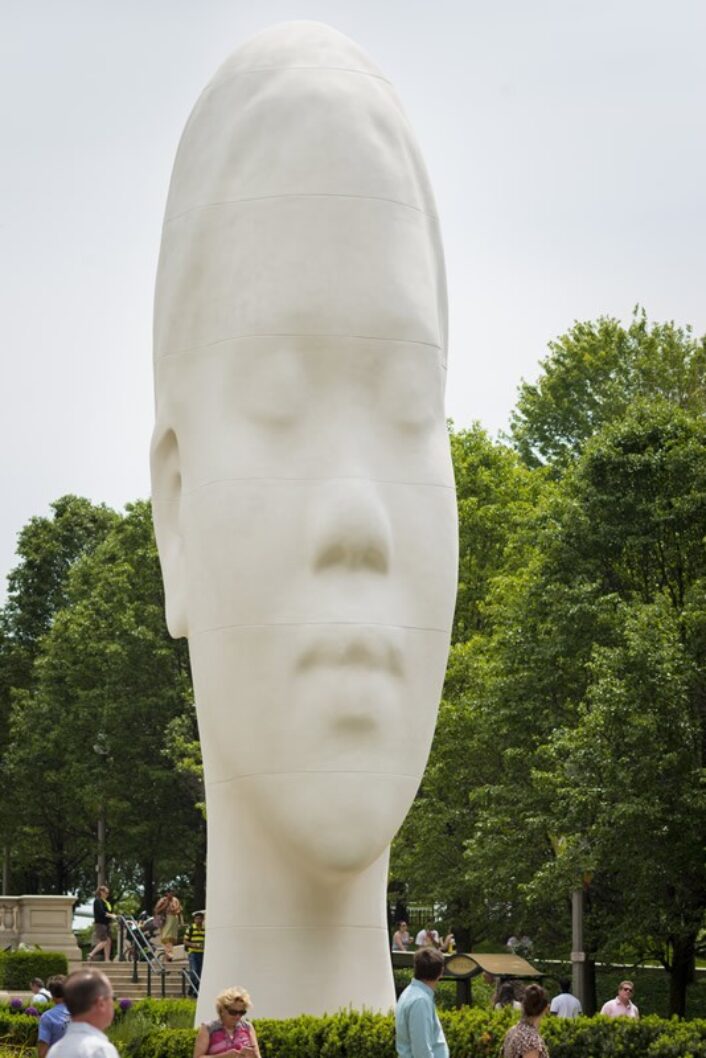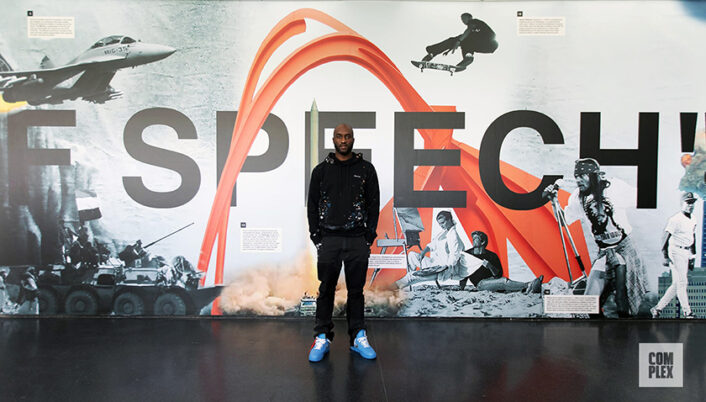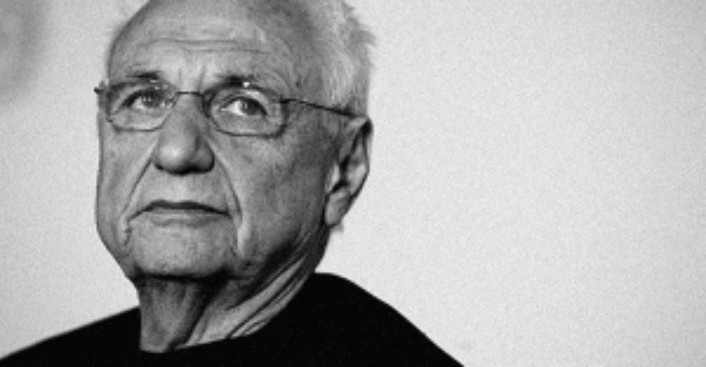Culture
Jaume Plensa’s tribute to Chicago
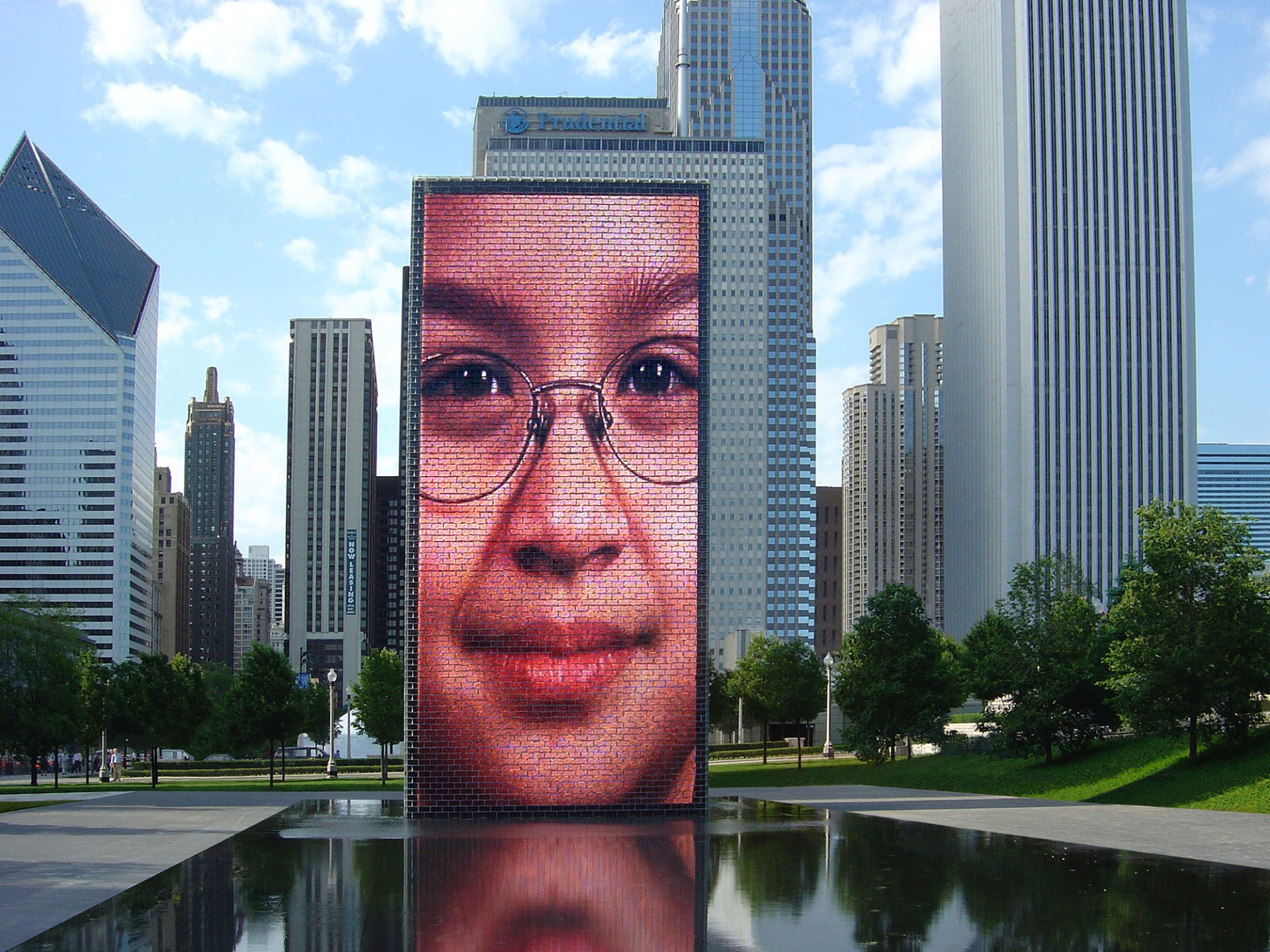
We love the reflection onto the pool below.
Image courtesy of: Jaume Plensa
There are plenty of things on Chicago’s “Must See List”; however, none are as unique as Jaume Plensa’s Crown Fountain. Set within Millennium Park, the fountain attracts visitors from near and far; and it is a perfect compliment to Cloud Gate (or, “The Bean” as it is fondly known).
Plensa unveiled the Crown Fountain in 2004 and seventeen years later; it is still an iconic piece in Chicago’s vibrant public art scene. The installation melds the faces of everyday Chicagoans into video water-play. It is safe to say that this work was a “turning point” for the artist. He says that after the fountain was introduced in the United States (courtesy of an interview with Steve Johnson for the Chicago Tribune, “People finally understood my work as a way to approach the public space.”
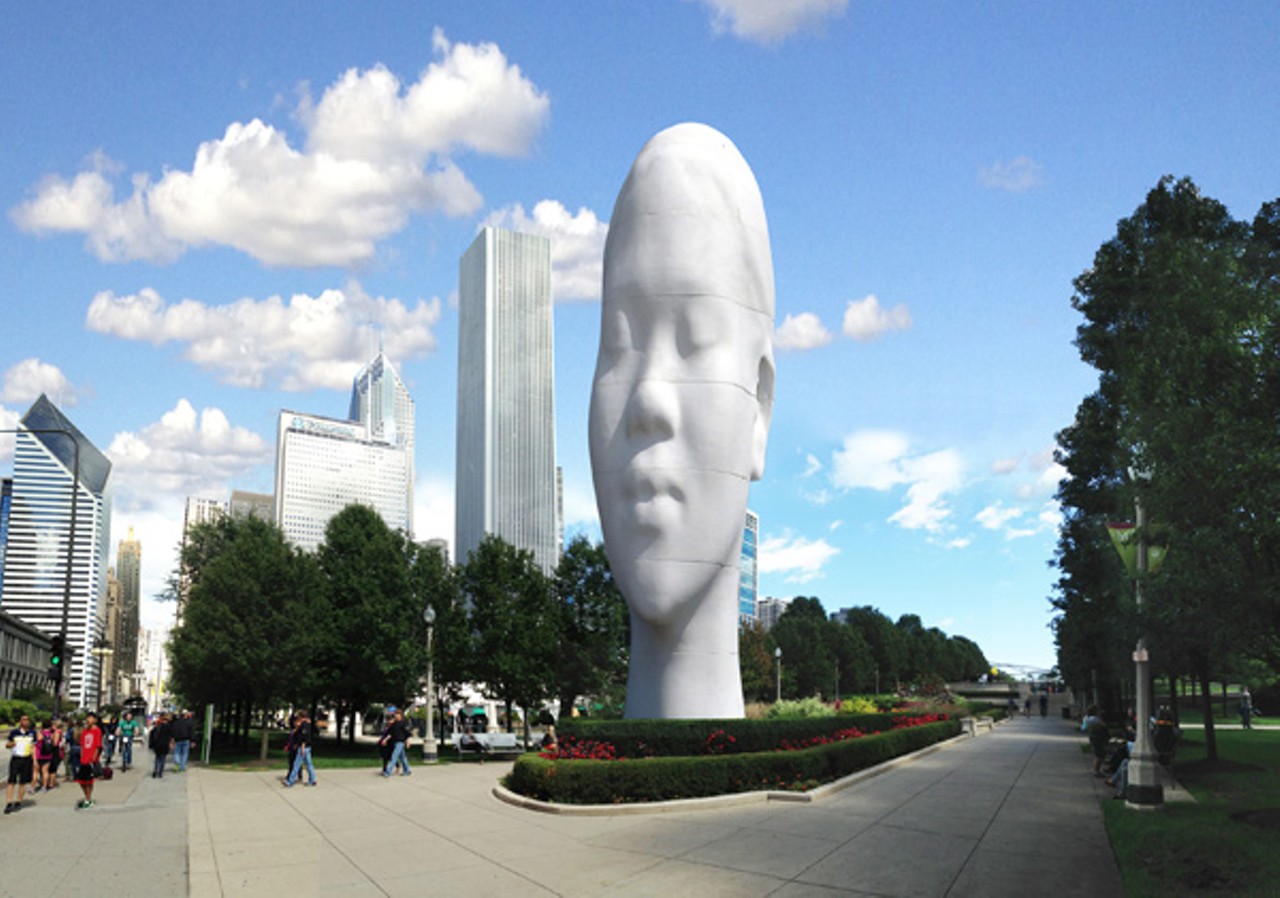
“Look Into My Dreams, Awilda” is Plensa’s 39-foot head that was installed in Millennium Park in 2014 to celebrate the park’s tenth anniversary.
Image courtesy of: Chicago Reader, photographed by: Deanna Isaacs
The fountain is interactive and dynamic… and huge. The two 50-foot towers face one another; and those towers feature faces of smiling or thinking individuals. Knowing that water is going to squirt out… people anxiously await the shooting water; and then, you relax as the water is emitted. Plensa likens the towers to sculptural objects that raise Chicagoans’ faces towards the city’s beautiful skyline. The Spanish-artist presented this as a modern take on traditional European gargoyles.
Luckily for us in Chicago, this is not a piece that Plensa plans on recreating! He says, “You can imagine that after we unveiled the Crown Fountain, a lot of other places around the world asked because it was so successful. But Chicago should keep the only one, is my idea.”
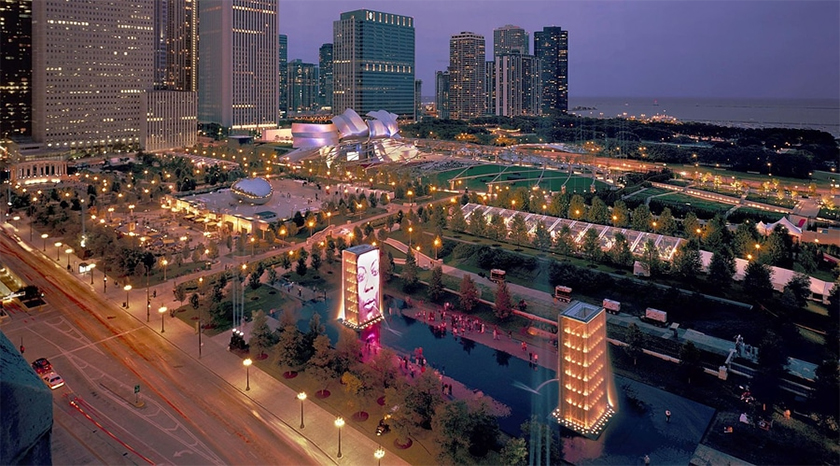
From above…
Image courtesy of: Archi Expo
Plensa loved the project of the Crown Fountain; it gave him an opportunity to step away from the multiple series of human heads that he had been working on. Lester Crown, the patriarch of the billionaire Chicago family contributed $10 million to the fountain’s cost. The original cost came in at $17 million; and Crown admits that initially, he did not understand the reasoning behind Pleansa’s high estimates. Plensa recalls sitting around a big table where Crown asked the Spanish artist if he could reduce the fountain’s scale for financial reason. He replied, “If you can reduce Chicago, then I can reduce my piece.” Needless to say, Crown went ahead with the project.
To this day, the Crown Fountain remains one of the most ambitious pieces in Plensa’s body of work. He says, “Chicago is the place where the most spectacular and fantastic art in the public displays. And when I was invited there, I immediately thought it was necessary to think about it- not only to do a beautiful piece but also a piece that opens gates and doors to others in the future.” He continues, “And that was the Crown Fountain. But it was so complex for me to work that I promised myself not to do another Crown Fountain in the world. And I continued my work in other directions because in my work I have several different families. But I promised myself not to do another Crown Fountain anymore because Chicago is so special that I have to keep one for Chicago and that’s all.”
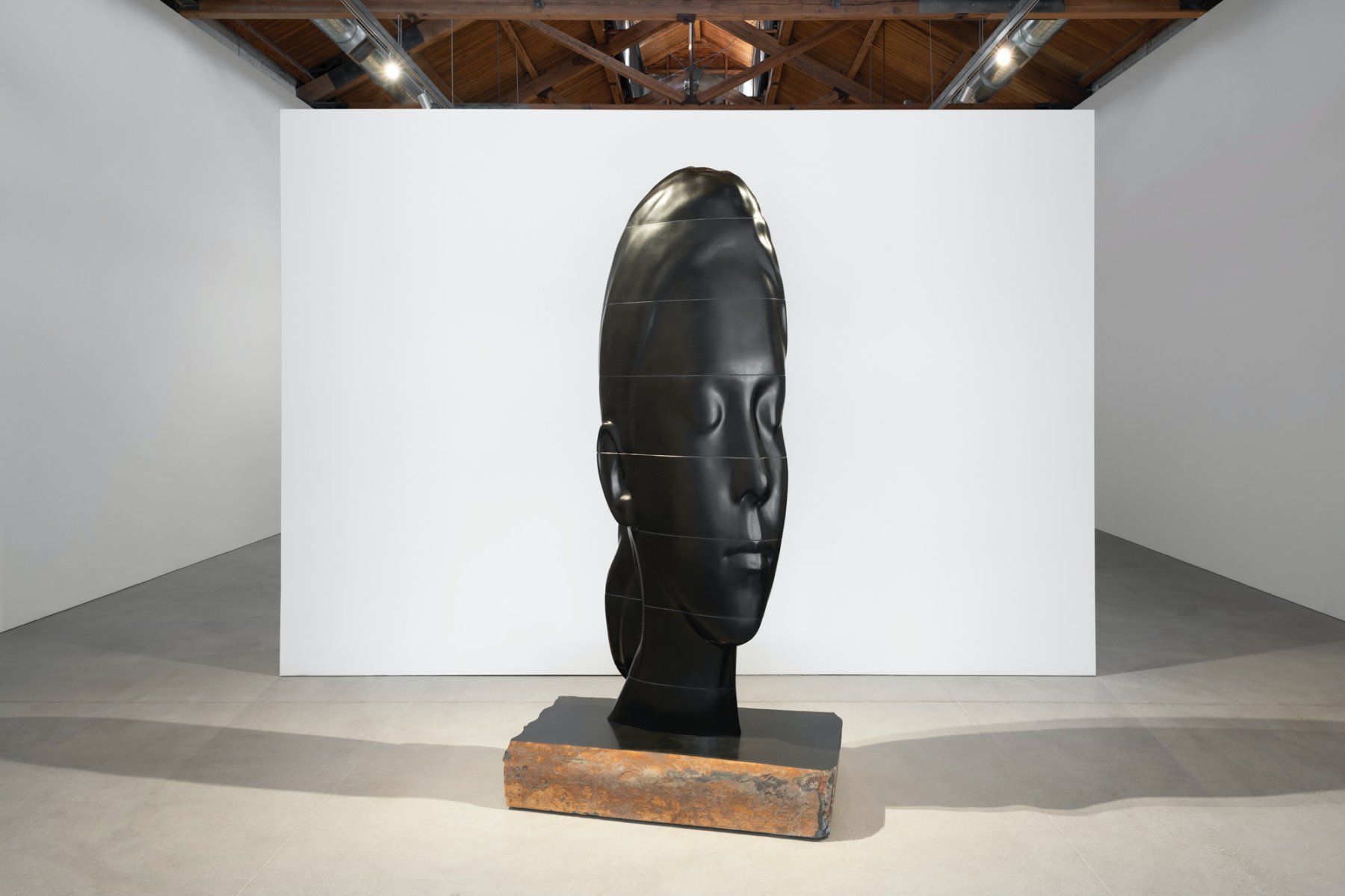
“Minna” from the “Nocturne” exhibition, made from black basalt, 2019.
“Minna” starts the show off, the imposing bust stands nine-foot tall. The depiction is of a young woman with her eyes closed in repose… this is Plensa’s largest work in basalt. Dimensions are: 118.5″ x 33″ x 61.75″
Image courtesy of: Galleries Now
Last year, Plensa came back to Chicago for an exhibition at Gray Warehouse. “Nocturne” was open for two months, by appointment only, in order to honor social distancing restrictions. The show debuted nine of Plensa’s latest works in different mediums such as stone, steel, bronze, and glass. Seamlessly, “Nocturne” explores the Spaniard’s wide range of work and impeccable mastery of sculptural portraiture.
Paul Gray, principal of both Richard Gray Gallery and Gray Warehouse, says that over the past two decades, Plensa’s global star has risen. This installation allowed Plensa to revisit his “second home.” The show’s title, “Nocturne” is a word that relates to night… and this installation is a way for Plensa to showcase the juxtaposition between lightness and darkness. The show was set up in order of material density. The most substantial sculpture was crafted from bronze and black basalt and the most diffused sculpture was made from stainless steel and Murano glass.
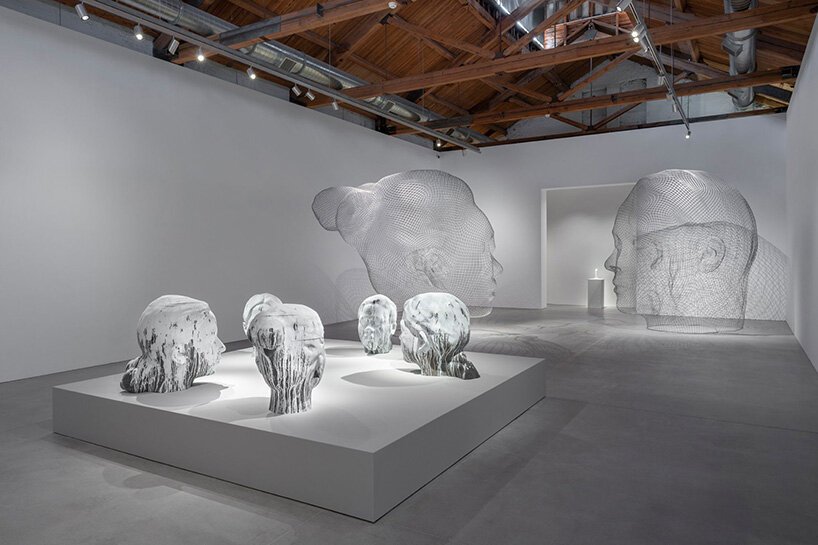
“Julia” and “Rui Rui” are ethereal.
Image courtesy of: Design Boom
A series of five bronze statues follow: Anna, Irma, Laura, Lou, and Rui Rui. These closely arranged ladies appear as though in quiet discussion. Each bronze has a unique, textured surface and once cast in bronze, Plensa hand-paints the surface with a white paint in order to obstruct the original dark finish.
Finally, the show concludes with two of the largest works, Rui Rui and Julia. The faces are delineated via a thin, stainless steel wire to offer the illusion of weightlessness. The works present a feeling of utter airiness and lightness. Courtesy of an interview with Design Boom, Plensa said, “Every time I do a portrait, soon after, in a way, the person no longer exists.”
